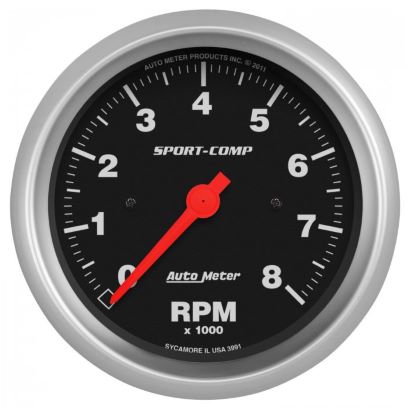How a Tachometer Assists Monitor Engine Health And Wellness and Efficiency
How a Tachometer Assists Monitor Engine Health And Wellness and Efficiency
Blog Article
Exploring the Functions and Advantages of a Tachometer: A Comprehensive Overview for Vehicle Lovers
From offering real-time data on engine rate to helping in enhancing equipment shifts, the tachometer offers as even more than just a dial on the dashboard. Its diverse functions not just improve driving experience but also play a crucial duty in keeping engine health and wellness and efficiency.
Understanding the Essentials of a Tachometer
In the realm of auto instrumentation, recognizing the fundamentals of a tachometer is important for any kind of cars and truck enthusiast looking to explore the details of engine performance monitoring. A tachometer, commonly displayed on the dashboard of a lorry, determines the engine's changes per minute (RPM) This crucial tool provides real-time data on how quick the engine crankshaft is rotating. By keeping an eye on the RPM, chauffeurs can guarantee they are running within the ideal array to optimize performance and effectiveness.
Tachometers normally have a scale marked in revolutions per min, with a redline indicating the optimum speed at which the engine can safely operate (tachometer). This info is essential for avoiding engine damage and maximizing gear shifting for hands-on transmissions. Furthermore, tachometers can aid in diagnosing engine concerns such as misfires or a falling short ignition system by spotting irregular RPM readings
Value of Keeping An Eye On Engine Rate

The engine speed, determined in revolutions per min (RPM), indicates exactly how quickly the engine's crankshaft is turning. Checking engine speed is particularly crucial throughout equipment shifts, as it helps motorists determine the ideal time to change gears for smooth acceleration and efficient gas intake.
Furthermore, tracking engine speed can also supply valuable understandings right into the total wellness of the lorry. On the whole, keeping track of engine rate with a tachometer is a fundamental practice that can boost driving efficiency, lengthen engine life, and ensure a much safer and a lot more satisfying driving experience.
Enhancing Performance Through Gear Shifts
Maximizing efficiency via critical equipment shifts is a key facet of making the most of a vehicle's efficiency and power result. Correct gear shifting makes certain that the engine runs within its optimum power band, permitting smooth velocity and improved gas economic climate. When original site shifting equipments, it is crucial to pay focus to the engine rate indicated on the tachometer. By monitoring the engine transformations per minute (RPM), drivers can determine one of the most appropriate minutes to upshift or downshift for ideal performance.

To achieve peak efficiency via equipment changes, drivers must exercise smooth and timely transitions between gears, matching engine speed with roadway rate to harness the complete potential of their vehicle's powertrain.
Optimizing Performance With a Tachometer
Understanding the art of equipment shifting in high-performance automobiles not moved here only improves driving experience however likewise plays a critical function in maximizing efficiency with a tachometer. tachometer. By paying very close attention to the tachometer readings, vehicle drivers can optimize their gear shifts to operate within the engine's most efficient range. When speeding up, changing gears at the right RPM indicated by the tachometer can stop the engine from overworking or underperforming, resulting in enhanced fuel effectiveness and overall performance
In addition, a tachometer aids chauffeurs prevent unnecessary revving, which not only throws away gas however also places unnecessary pressure on the engine. Consistently monitoring the tachometer while driving allows for smoother i thought about this equipment transitions, decreasing wear and tear on the transmission system in time.

Advanced Tips for Tachometer Application
To dig into sophisticated pointers for tachometer usage, take into consideration incorporating the use of change lights. Change lights are visual indications that brighten when it's time to move gears based on engine transformations per min (RPM), permitting for seamless gear adjustments without continuously keeping track of the tachometer. By fine-tuning shift factors and establishing cautioning limits, motorists can optimize velocity and engine performance while minimizing the danger of over-revving.
Final Thought
In verdict, the tachometer functions as a critical device for automobile enthusiasts to monitor engine rate, improve efficiency via equipment shifts, and make the most of efficiency. By comprehending the features and advantages of a tachometer, chauffeurs can enhance their driving experience and lengthen the life expectancy of their vehicle. Using sophisticated ideas for tachometer utilization can additionally boost driving skills and overall performance when driving.
Report this page